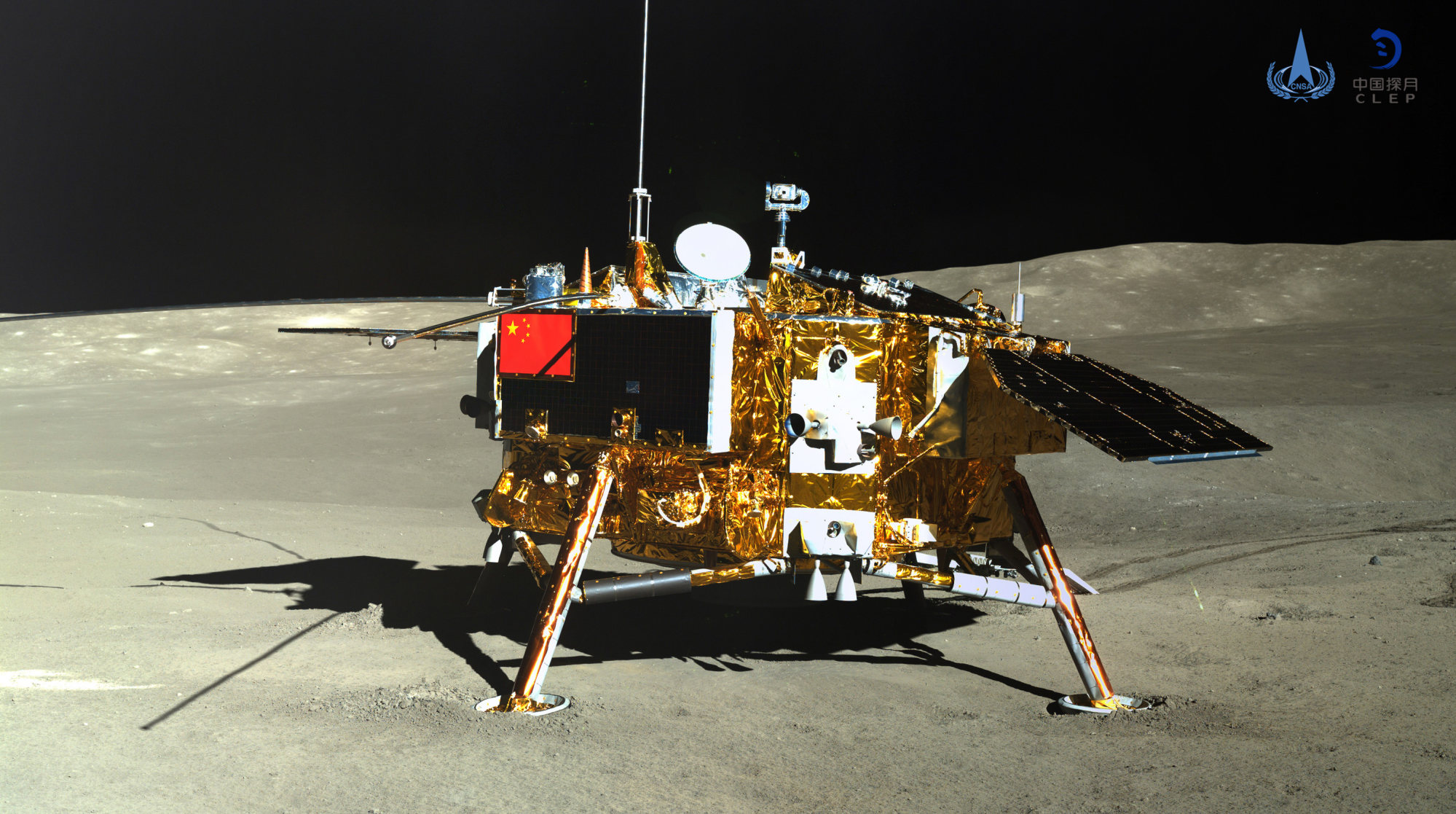Since 2007, Beijing has successfully launched several missions to both the lunar orbit and surface, including on the far side.

And according to official Chinese media, preparations for another lunar mission this summer have been “progressing smoothly”.
“We better watch out that they don’t get to a place on the moon under the guise of scientific research,” warned Bill Nelson, Nasa’s top official as well as a former astronaut and US senator from Florida between 2001 and 2019.
“We’re in a space race.”
Beleaguered Peregrine mission could put US behind China in moon race: expert
Beleaguered Peregrine mission could put US behind China in moon race: expert
Recently senior Biden administration officials, analysts, and US lawmakers across the political spectrum have sounded alarms over Beijing’s “astropolitical” intentions.
The panel’s bipartisan resolution urged Washington to fund programmes pivotal to outcompeting China, “including by ensuring the United States is the first country to permanently station assets at all Lagrange points”.

The lawmakers did not elaborate on what the assets would be.
But space experts say understanding what Lagrange points are could offer a clue.
Named after Italian astronomer and mathematician Joseph-Louis Lagrange in the late 18th century, the L points are described by Nasa as “parking spots” in the region of space between the sun, Earth and moon.
There are five L points each in both the sun-Earth and Earth-moon systems.
US and China ambassadors identify areas of cooperation as well as danger zones
US and China ambassadors identify areas of cooperation as well as danger zones
These are locations where the gravitational pull of the two celestial bodies is cancelled out, according to Martin Elvis, an astronomer at the Smithsonian Astrophysical Observatory in Massachusetts.
This balance of forces, or equipoise, renders them relatively stable and thus suitable for placing satellites and telescopes, he said. Spacecraft can be stationed there without requiring much fuel.
Elvis says these advantages make the points ideal for “space cities”, a concept that has captured popular imagination for decades.
He described space cities as giant cylinders that “would rotate slowly and you could stand on the inside surface and the centrifugal force would feel like gravity”.
While L points in the sun-Earth system are considered useful to study the sun, experts say the cislunar space – the points in the Earth-moon system – carry strategic value. Among these, L1 and L2 are most prized owing to their proximity to the moon.
Shawn Willis of the Air Force Institute of Technology in Ohio observed in a report last month that the “future uses of the cislunar region include military satellites in orbit at the Lagrange points used to monitor and possibly control access between the Earth and the moon”.
Positioning, navigating and timing satellites could be another mission suited for these locations because of their ability to reach the near and far sides of the moon, he added, enabling lunar guidance capabilities like those on Earth.
China in 2018 positioned its Queqiao relay satellite at the L2 point in the Earth-moon system to communicate with the Chang’e 4 lunar probe, the first to reach the moon’s far side.
Einstein Probe: China launches powerful space X-ray observatory
Einstein Probe: China launches powerful space X-ray observatory
Beijing also plans to start building a lunar base in the next five years with at least one brick made of lunar soil in about 2028, then send humans to the moon by 2030.
Their “aggressive actions” sought to turn space into a “warfighting domain”, she added.

GPS, or the Global Positioning System – created, owned and controlled by the US government – is a satellite constellation that provides critical positioning and navigational information for military, civil and commercial use.
Most modern devices around the world today have inbuilt GPS receivers. Nevertheless, the US is not sitting idly by.
Nasa said the Gateway programme entailed building a small space station that would orbit the moon to deliver “essential support for lunar surface missions”.
China storms ahead in space weather research with largest observatory on Earth
China storms ahead in space weather research with largest observatory on Earth
Monitoring the cislunar regime, communicating freely across it and safely navigating through it would be crucial to enabling growing scientific and economic opportunities, said Charles Galbreath of the Mitchell Institute of Aerospace Studies in Virginia.
“If others go there, then they will take over, and you won’t be able to go even if you want to. This is reason enough.”
Elvis of the Smithsonian Astrophysical Observatory reckoned that competition focused on the moon’s south pole because that part of the lunar surface gets “permanent sunlight”, meaning there would be a “permanent power source” and less severe temperatures.
However, the lunar poles also contain deep craters that do not receive any sunlight. These locations are expected to hold ancient ice deposits and useful minerals.
North America seemingly targeted with signals by China’s space plane. But why?
North America seemingly targeted with signals by China’s space plane. But why?
Nasa’s Artemis 2, previously scheduled to send four astronauts for a lunar fly-by this year, is now expected to take off in September 2025.
Artemis 3, which would put humans near the moon’s south pole for the first time ever, was delayed from 2025 to 2026. China is expected to arrive there with an uncrewed lander by 2027.
Perhaps anticipating a high-stakes race above Earth, a White House strategy paper released in 2022 called for a “rules-based international order” in space.
And like on Earth, the US has sought to woo allies, forging new principles for regions far from the planet.
US planned to launch secret spacecraft a day ahead of China. SpaceX delayed it
US planned to launch secret spacecraft a day ahead of China. SpaceX delayed it
While China is not a member of the agreement, it has invited international partners to collaborate on its lunar missions.
Whether regarding the moon or Lagrange points, global cooperation was necessary, Elvis said, referring to the entire region above Earth as “real estate” in space.
“There will be some limit to the number of satellites you can get there because of crowding at some point,” he added. “Collisions and debris will be bad for both”.

